
“Tradition can
be Created”
Beverage Industry

ALINE SUÁREZ DEL REAL, GPJ MEXICO
Yolanda Bardales, president of Mujeres Catadoras de Cerveza en México, a collective of women beer tasters, hosts the group’s annual meeting in Pachuca, Mexico.

ALINE SUÁREZ DEL REAL, GPJ MEXICO
Yolanda Bardales, left, and other members of the beer tasting collective taste, smell and note flavors.
PACHUCA, MEXICO — Yolanda Bardales expertly carries three mugs of craft beer to a long dinner table lined with attentive guests. Some may assume she is a server — ever since the commercialization and industrialization of alcohol during the 19th century, brewing has been a male-dominated field in many societies, including Mexico. But Bardales is the president of Mujeres Catadoras de Cerveza en México, a countrywide collective of women beer tasters, and the guests at the table are all women, taking part in the collective’s eighth annual meeting in the city of Pachuca, in the central Mexican state of Hidalgo.
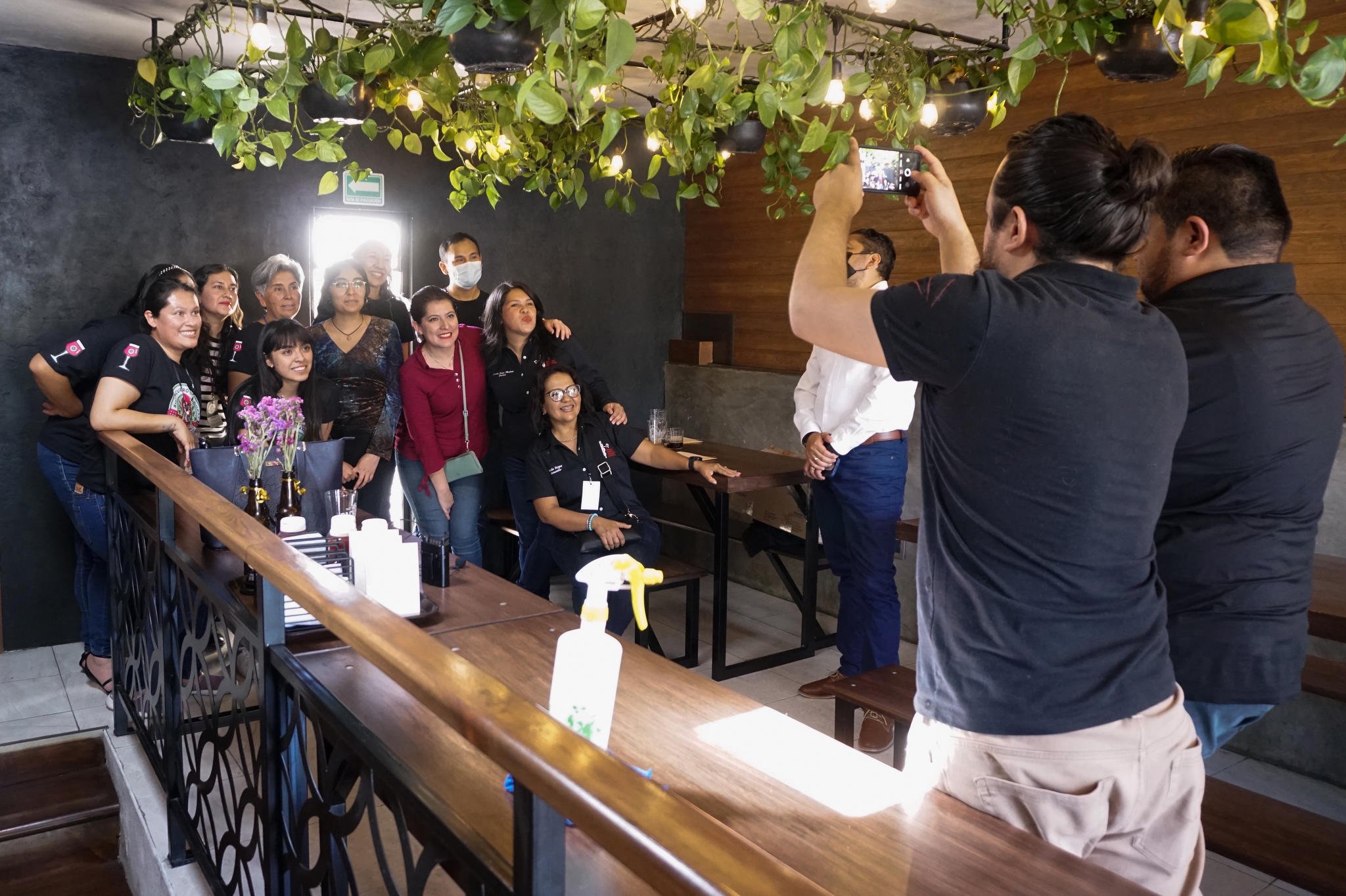
ALINE SUÁREZ DEL REAL, GPJ MEXICO
Members of Mujeres Catadoras de Cerveza en México pose for a group photo.

aline suárez del real, gpj mexico
Yolanda Bardales, the president of Mujeres Catadores de Cerveza en México, poses with a glass of beer.
“For centuries, if not millennia, across the world, brewing was women’s work. ”

For centuries, if not millennia, across the world, brewing was women’s work, an extension of typically female-dominated activities such as food gathering and preparation. But as brewing moved out of homes and into factories, women were pigeonholed into supporting and often hypersexualized roles, such as models and barmaids. In Mexico, knowledge of beer production is said to come from Europe — although, as early as 1600 B.C., Mayan civilizations in what is now Honduras were using cacao beans to produce beer, long before it was used for nonalcoholic cocoa. Breweries rose in popularity in the late 18th century, with beer displacing local fermented beverages, such as pulque, as the Mexican drink of choice by the 20th century. In 2020, beer sales in Mexico topped 185 billion Mexican pesos ($9.9 billion) — but women’s participation in the industry remains limited. According to a national survey of independent artisanal beer producers, their employment in the beer industry stands at roughly 35%.
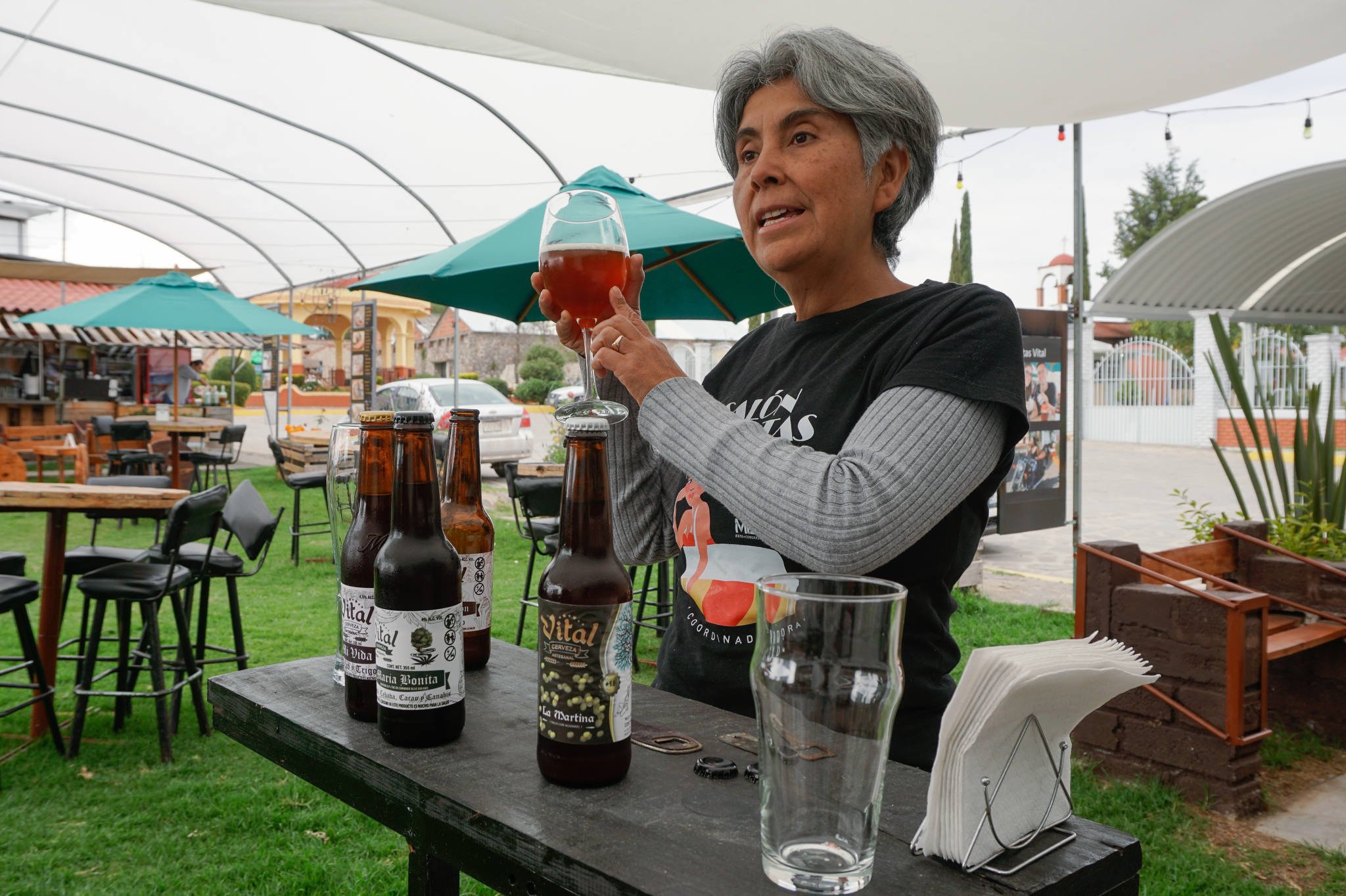
ALINE SUÁREZ DEL REAL, GPJ MEXICO
Rosario Nava holds court at her family-run craft brewery during a beer tasting in Tepotzotlán, Mexico.

ALINE SUÁREZ DEL REAL, GPJ MEXICO
Rosario Nava works the mill at her family-run craft brewery in Tepotzotlán.
Bardales and her peers are trying to change that. Rosario Nava, a physical engineer-turned-brewer in the town of Tepotzotlán in the State of Mexico, just north of Mexico City, says that as soon as she’s perfected the parameters of her malts, she will start teaching other women. It’s not just about improving the gender imbalance, she says, but “the rescue of something that belonged to women and was taken away very mercilessly by the male gender and by the church.” Even before entering the field, Nava had to navigate sexist comments — including within her family. She fought hard to obtain a college education. “My dad was a definitive no, because what was I going to do there, get pregnant?” she says, recalling his reaction. But her mother was steadfast in her support.
For some years, Nava was engaged in a different pursuit. As a graduate student in material sciences and engineering, she set out to create medicinal products and, later, food derived from mushrooms. She turned her attention to beer after noting that there were no brewmasters in her city. “I’m a specialist in mushroom production, and beer is nothing more than mushroom cultivation,” she told herself. “In this case, yeast is a fungus in liquid media.”

ALINE SUÁREZ DEL REAL, GPJ MEXICO
Rosario Nava poses for a portrait at her brewery.

ALINE SUÁREZ DEL REAL, GPJ MEXICO
Rosario Nava prepares for a beer tasting.
“[It is] the rescue of something that belonged to women and was taken away very mercilessly by the male gender and by the church.”

Rosario Nava
Even women who come from families involved in the trade can find it difficult to enter the industry. Carmelita Ramos, who hails from the town of Singuilucan in the central altiplano, grew up watching her father and brother make pulque but could never muster the courage to scrape her own maguey. After completing her studies in architecture, she finally made the leap. Today, she has her own tinacal, where she ferments agave sap and turns it into pulque, and promotes this resurgent central Mexican drink at regional and national events. Ramos is always pleased when she meets other tlachiqueras — women who harvest sap from agave. “I’m glad girls and women are encouraged to do it themselves, too.”

ALINE SUÁREZ DEL REAL, GPJ MEXICO
Carmelita Ramos surveys her family’s agave fields in Singuilucan, in the state of Hidalgo.

ALINE SUÁREZ DEL REAL, GPJ MEXICO
Carmelita Ramos empties an acocote, a tool used to siphon agave sap.
Fewer than half of women aged 15 and older are part of the Mexican labor force. Women’s employment is constrained by a host of factors, including greater, if not total, responsibility for unpaid work at home, and by various forms of violence in the workplace. Geography and ethnicity exacerbate this imbalance: Only 34% of rural women and just over a quarter of indigenous women are part of the formal labor force. Machismo, an exaggerated sense of masculinity that buttresses patriarchal norms, plays a key role in the underrepresentation of women, says mezcal master Patricia Acevedo Pacheco, 61. When it comes to alcohol-related industries, long-standing taboos are a major factor, too. “For example, it is said that when a woman is very flirtatious and hot-blooded and enters the factory, mezcal no longer ferments,” she says. “There are older gentlemen who still don’t allow women to enter the factories.”
 />
/> ALINE SUÁREZ DEL REAL, GPJ MEXICO
Carmelita Ramos inspects an agave plant for sap.

ALINE SUÁREZ DEL REAL, GPJ MEXICO
Carmelita Ramos, pictured here in her family’s agave fields, grew up watching the men in her family make pulque.
“It is said that when a woman is very flirtatious and hot-blooded and enters the factory, mezcal no longer ferments.”

Patricia Acevedo Pacheco
Even in rural areas, though, change is afoot. In Atlixtac, a Nahua town in the mountains of the state of Guerrero, María Concepción Casarrubias Ramírez actively participates in mezcal production at her community-owned distillery. “There are more and more of us women,” she says. Before her divorce, her husband forbade her from working there. “Sometimes, out of shame or stigma — because people often think that one doesn’t need a man anymore. ‘She can fend for herself.’ Because of that, sometimes we don’t want to get involved as much in the field, in men’s work.” Antonia Castillo Farías, 32, who works alongside Casarrubias, has also had to negotiate her increasing involvement at the distillery. “I started out bringing my husband his food every day. Now, he has me doing some other things — he says it’s so I can learn. For example, when he goes to the field to harvest, I load the maguey plants on the donkeys.”
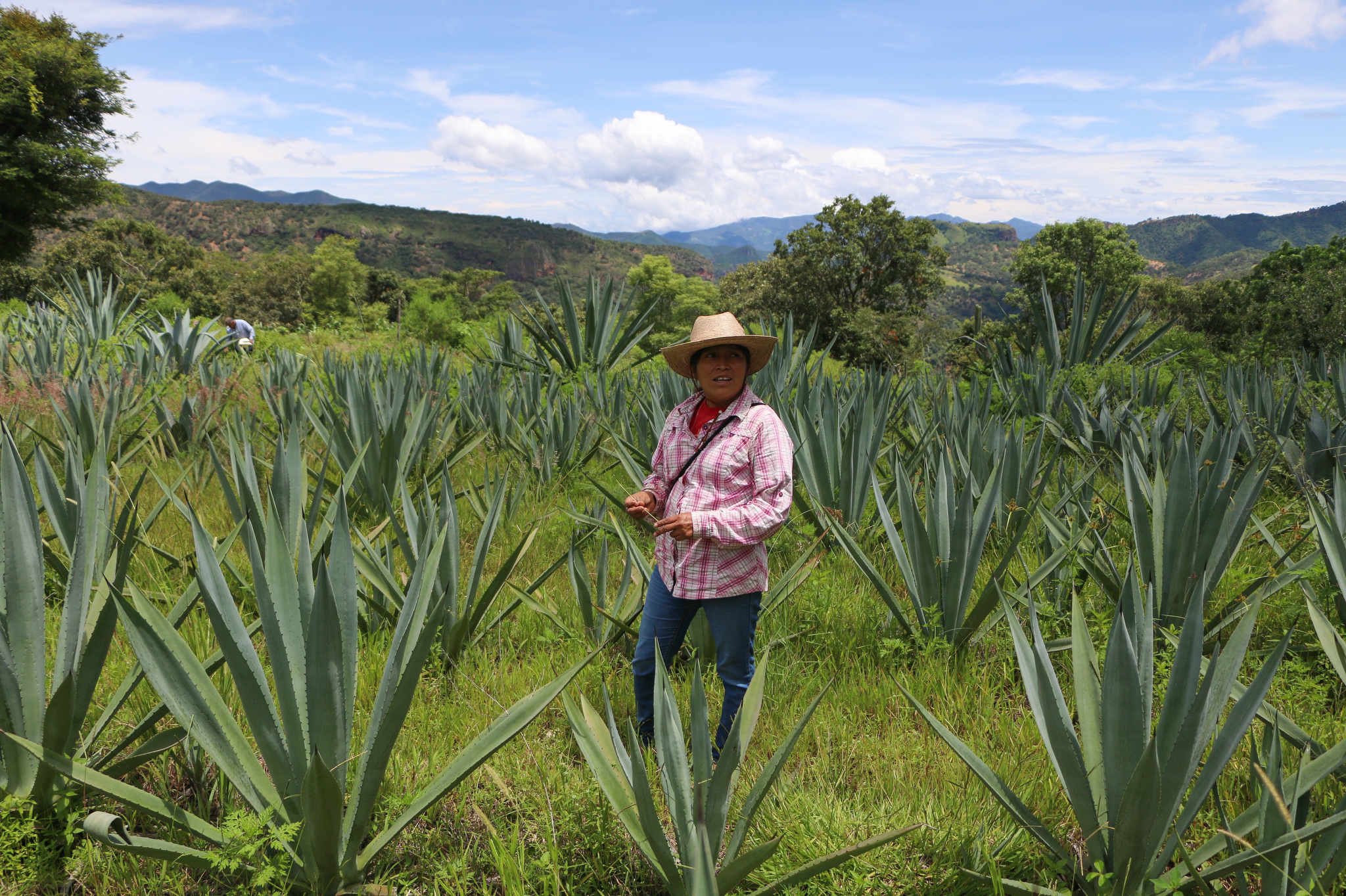
AVIGAÍ SILVA, GPJ MEXICO
María Concepción Casarrubias Ramírez walks through her family’s agave field in Atlixtac, in the state of Guerrero.

AVIGAÍ SILVA, GPJ MEXICO
Celestina Ramírez Vargas displays a stalk of agave commonly called “cupreata” — an important species for producing mezcal.
Even in the formal labor market, women are far more likely to be employed in industries related to care work, such as health and education — where female participation rates are 75% and 68%, respectively, according to 2018 figures, the most recent available — than engineering, manufacturing and construction, where participation is much lower, at 29%. But some women are consciously applying principles of care to their work as brewers. “We are the ones who naturally know how to heal,” Nava says. The beer she creates is made from local cereals, such as creole corn, wheat, barley and oats. “Unfortunately, communities here are selling their lands at very low cost,” she says of Tepotzotlán. Her aim is to increase the range and value of goods made from local produce, to strengthen and sustain her community.

AVIGAÍ SILVA, GPJ MEXICO
From left to right, María Concepción Casarrubias Ramírez; her mother, Celestina Ramírez Vargas; and sister-in-law Antonia Castillo Farías share home-brewed mezcal.

AVIGAÍ SILVA, GPJ MEXICO
María Concepción Casarrubias Ramírez checks the center of an agave plant for sap.
“There are more and more of us women.”

María Concepción Casarrubias Ramírez
Others thumb their noses at any gendered division of labor. Before pursuing a doctorate in agrifood science and technology, Lorena Lara Fernández was head of production at Viñedos La Redonda, among central Mexico’s most renowned wineries. She placed orders, sent quotes, answered emails, did analytics. She also worked the machinery, an area of the business typically dominated by men. “That year [2010], we got a new winepress and I didn’t let the guys use it,” she says. “I said, ‘They’re going to break it.’”

PATRICIA ZAVALA GUTIÉRREZ, GPJ MEXICO
Lorena Lara Fernández poses for a portrait at the Bodegas Campotoro distillery in Ciudad Manuel Doblado, in the state of Guanajuato.
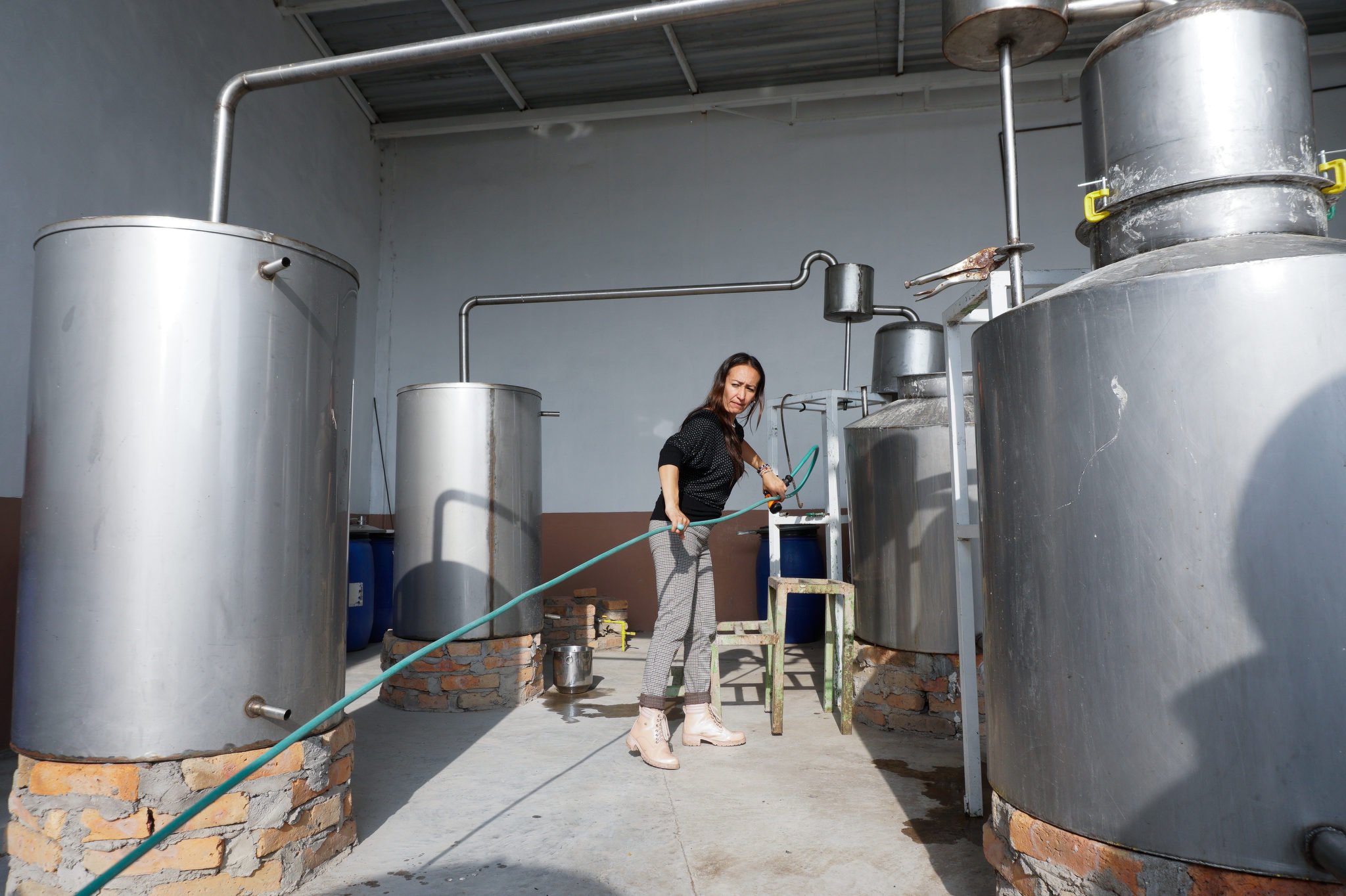
PATRICIA ZAVALA GUTIÉRREZ, GPJ MEXICO
Lorena Lara Fernández prepares to clean distillation tanks at the Bodegas Campotoro distillery.
For the past seven years, Lara has run her own business, Bodegas Campotoro, which produces wine and signature distilled spirits such as rum, tequila, gin and a one-of-a-kind whiskey made with 70% sorghum and 30% corn. Bodegas Campotoro is a one-woman show: Lara buys the raw material, does the distilling, promotes her products at fairs and exhibitions, and curates tastings and tourist experiences. Unlike many of her peers, she has the support of her family and knows “many people from many places.” During the pandemic, when sales slumped, she worked as a high school teacher and taught 23 subjects, which means she is well known in town, but working and traveling alone comes with a vast array of challenges. She is her own “handywoman” — she repairs hoses, adjusts valves, hauls buckets full of liquids. Her dog, Dino, accompanies her everywhere.
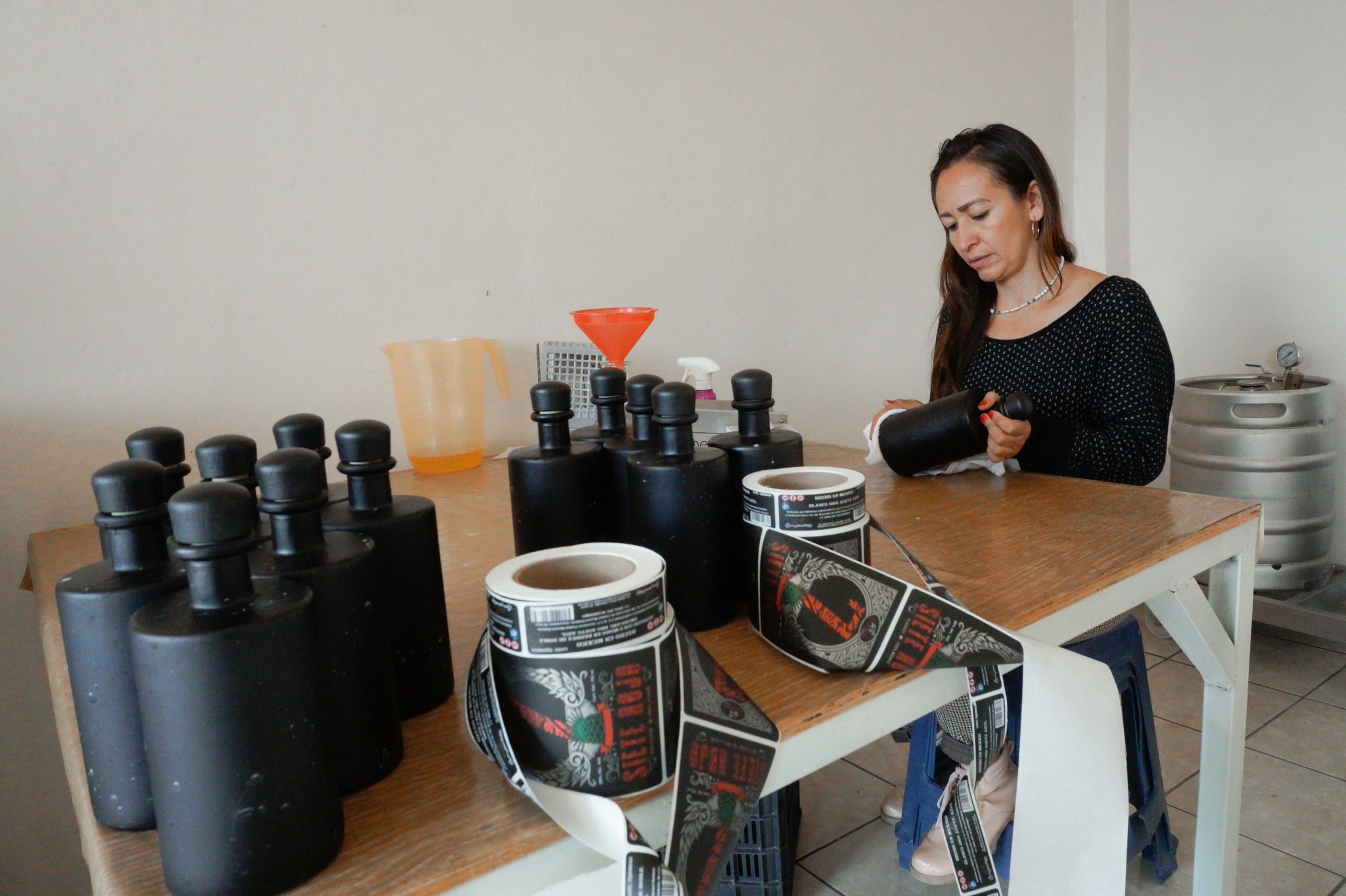
PATRICIA ZAVALA GUTIÉRREZ, GPJ MEXICO
Lorena Lara Fernández prepares bottles for sale at the Bodegas Campotoro distillery in Ciudad Manuel Doblado, in the state of Guanajuato.

PATRICIA ZAVALA GUTIÉRREZ, GPJ MEXICO
Lorena Lara Fernández distills her flagship product, a one-of-a-kind whiskey made with 70% sorghum and 30% corn.
“Tradition can be created. Every dream that is out there, we are here to help each other in achieving it.”

Yolanda Leticia Ruiz Sánchez
Women are beginning to make their mark on the international level, too. In 2022, biotechnologist and brewmaster Katia Niño, co-founder of Cervecería Ángeles Zaragoza in the city of Puebla, joined 82 other sommeliers at the World Championship of Beer Sommeliers in Munich — the first Mexican woman to do so. “To be able to go to a world competition and see that, yes, there are mostly men — but I also saw there were many women from other countries,” she says. “That part is very cool and gives you a lot of pride.”
“I think, as women, we have to be aware that we have always been here — and that we have the same feet, hands, heart, thoughts as men,” says Yolanda Leticia Ruiz Sánchez, co-founder and president of Mujeres del Mezcal y Maguey, a professional association of women involved in maguey and mezcal production. “Some girls are afraid to approach us because they say, ‘Oh, I don’t come from a mezcal family.’ No. Tradition can be created. Every dream that is out there, we are here to help each other in achieving it.”

